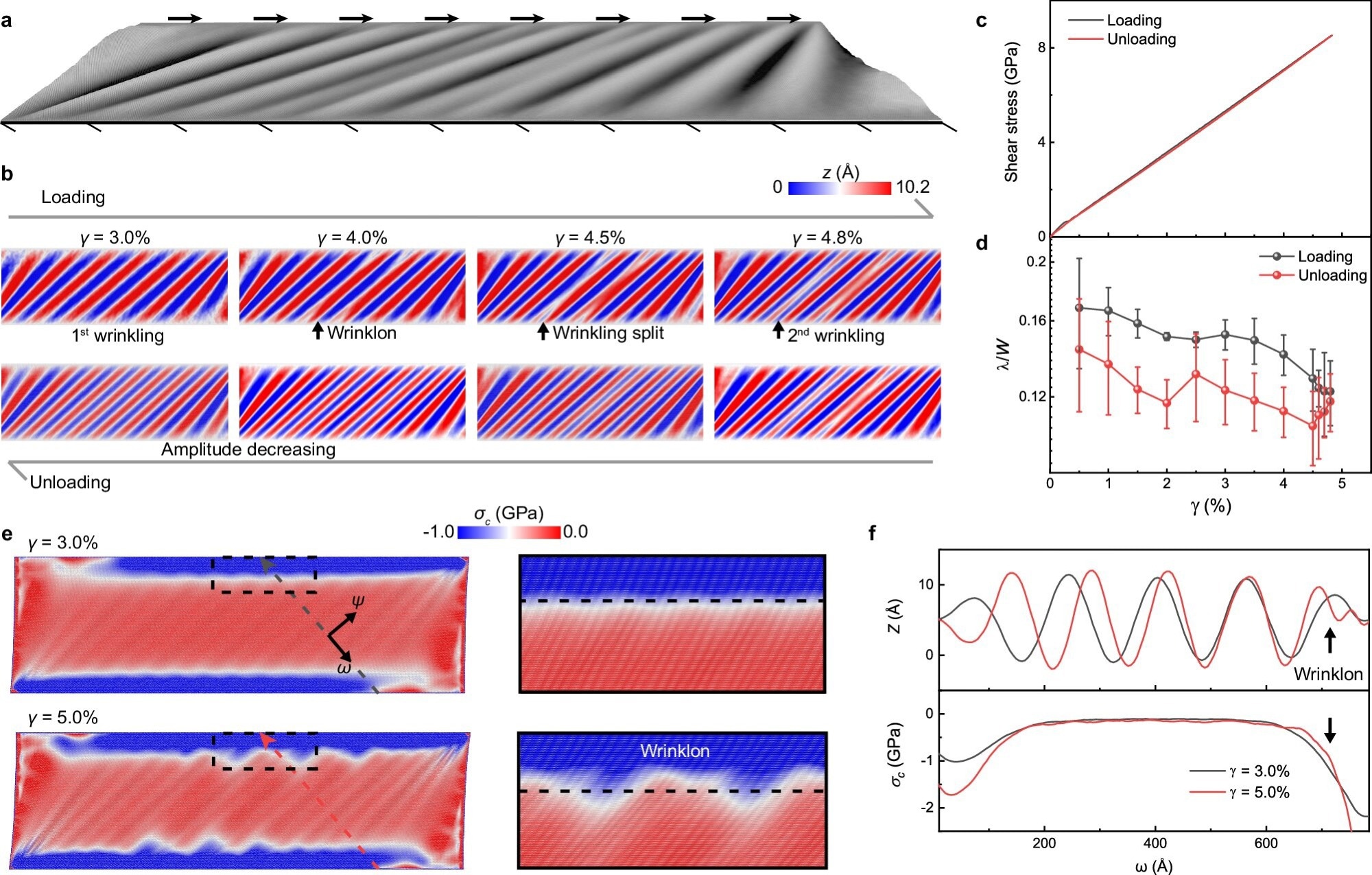A research team headed by Professor Yang Lu from the Department of Mechanical Engineering at The University of Hong Kong has developed a technique for evaluating instability in atomically thin films, marking a significant advancement in this field. The findings are published in the journal Nature Communications.
 Comparison of the loading and unloading processes in MD simulations. Image Credit: Nature Communications.
Comparison of the loading and unloading processes in MD simulations. Image Credit: Nature Communications.
Two-dimensional (2D) materials possess exceptional mechanical and physical capabilities and atomic-level thickness. They hold great potential for use in various disciplines, including composite materials, flexible electronics, and semiconductors.
When single-layer 2D materials are exposed to geometric constraints, they undergo out-of-plane deformation due to their extremely low bending stiffness. This can result in ripples, buckling, wrinkling, or even folds, which can substantially impact their mechanical, electrical, and thermal characteristics.
Mechanical stability also strongly impacts the longevity and functionality of devices based on suspended 2D materials, such as proton transport membranes, nanochannels, resonators, oscillators, and nano kirigami/origami.
Understanding the mechanical stability mechanisms of 2D materials and gaining control over their instability behaviors is essential for using 2D materials and other atomically thin films in mechanical applications.
Professor Lu's team, working with scientists from the University of Science and Technology of China, developed a “push-to-shear” technique that allowed for controllable tuning of the instability characteristics of 2D materials and the first in situ observation of the in-plane shear deformation of single-layer 2D materials.
The mechanical principles and control mechanisms of multi-order instability in atomically thin films were disclosed by combining theoretical research with molecular dynamics simulations.
The team intends to work with industry partners to create a novel mechanical measurement platform for atomically thin films. This platform will use in-situ micro/nanomechanical techniques to enable deep-strain engineering of the materials' physical properties and achieve high-throughput mechanical property measurements.
This research breakthrough overcomes the difficulty of controlling the instability behavior of suspended single-atom-layer 2D materials, achieving the measurement of the bending stiffness of single-layer graphene and molybdenum disulfide (MoS2). The study also provides new opportunities for modulating the nano-scale instability morphology and physical properties of atomically thin films.
Yang Lu, Professor, Department of Mechanical Engineering, University of Hong Kong
Lu said, “We developed a MEMS-based in-situ shearing device to control the instability behavior of suspended single-layer 2D materials, which is also applicable to other atomically thin films.”
We further investigated the evolution of the wrinkle morphology of 2D materials induced by instability, uncovering different instability and recovery paths dominated by changes in the wavelength and amplitude of wrinkles, and providing a new experimental mechanics method for assessing the instability behavior and bending performance of atomically thin films.
Yang Lu, Professor, Department of Mechanical Engineering, University of Hong Kong
Professor Lu added, “In addition, the local stress/strain and curvature changes related to the instability process of 2D materials have important applications in physical and chemical fields, such as changing the electronic structure by adjusting the wrinkled morphology and establishing fast proton transport channels.”
This research has achieved controllable instability modulation of atomically thin materials represented by 2D materials. Compared to traditional tensile strain engineering, shear strain can deeply regulate the band structure of 2D materials. In the future, we will continue to advance this research and ultimately hope to achieve an integrated design of mechanics and functionality in low-dimensional materials under deep strain.
Dr. Hou Yuan, Study First Author and Postdoctoral Fellow, University of Hong Kong
Journal Reference:
Hou, Y., et al. (2024) Tuning instability in suspended monolayer 2D materials. Nature Communications. doi.org/10.1038/s41467-024-48345-7.